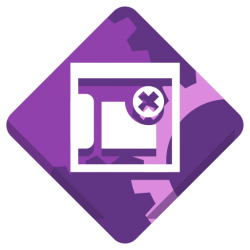This will be the first blog post in a series to help get extensions quickly updated after each release. While communications have been quiet, we have not been idle! For the past few months, we have been working on building the structure to building a robust extensions community.
GNOME 40 will be released soon and it will be important to know what that means for extension developers. Since there have been significant changes in GNOME Shell – it will be important to understand where those changes are and how they might affect the various extensions that are out there.
The changes in GNOME Shell have been primarily around the overview as you can imagine if you’ve been keeping up with the GNOME Shell blog posts and the preferences. Previously preferences were GTK3 base and now require using GTK4.
To help with updating your extensions, community member Just Perfection has created a porting guide that you can use to learn how to modify your extension to work with the GNOME 40 shell release. With the advent of the porting guide, we hope that porting will be a lot smoother than it has in the past.
It’s also important to highlight an important change that has also taken place and that is GNOME Shell will once again perform strict version checking. Because there are numerous changes, and that some distros will still be using GNOME 3.38 – we will be enforcing version checking here on in for GNOME 40 compatible extensions. If you do not set your version to the correct GNOME Shell version – it will fail to load.
Testing Your Extension
To test your extension for the GNOME 40, please download the GNOME OS image from [link] and then use the GNOME Boxes from https://flathub.org/. Do not use your distro version as that will not work with the GNOME OS image.
GNOME Boxes need to be compiled with UEFI support, but not all distros have compiled that support in and so it’s more consistent to use the flatpak version as the canonical source.
Download the GNOME 40 release candidate from here – https://os.gnome.org/download/40.rc/gnome_os_installer_40.rc.iso [~2.2GB].
Once you have downloaded the image, you can import it in GNOME Boxes. Go through the GNOME initial setup to create your account and then you’ll be fully logged in.
GNOME software will automatically notify you if there are any updates. You can manually keep up with changes with:
$ sudo ostree admin upgrade -r
In order to effectively use the image testing you will need to switch to the development tree. To do that:
$ sudo ostree admin switch gnome-os:gnome-os/40/x86_64-devel
This might require that you resize your partition so that there is enough space to do that If so, resize your partition to an extra 2G of storage to accommodate the developer toolchain.
You can then use git and other tools to copy your extension into the image. Please note that this image is not based on a distro and is built completely from source using buildstream and freedesktop-sdk and is managed through ostree. If your extensions have any external dependencies, you will need to bring them in manually.
Once you’ve got the extension working to your expectations, please make sure you update the metadata file to include the GNOME 40 version so that it will properly load before packaging it and uploading it to https://extensions.gnome.org/.
In the future, we will try to provide a better experience for testing – but for now, we will use this method. If you have questions or run into problems – you are welcome to use our community communication channels to ask them.
Porting your extension
For your convenience, we provide a porting guide – which is located at https://gjs.guide/ – inside the guide, there will be a porting section that you can use to port your extension by identifying the various function calls you are using and providing an alternative one to use.
During the porting process, you are welcome to join our community communication channels and ask us for help.
Reaching out to the Community
There are several ways you can reach out to us. You’re welcome to ask your questions on discourse.gnome.org and/or join us on the matrix at https://matrix.to/#/#extensions:gnome.org. If you prefer IRC, you can use our IRC server irc.gnome.org and then join #extensions.
To our users
We hope this is a beginning of a much better experience for those who use extensions on the GNOME platform. To aid us in this, we need your help. Since this is a relatively new initiative – it would be wonderful if you would aid us in outreach. If you have a favorite extension please politely call attention to this blog post. The greater the outreach the better we can hope to have most of your favorite extensions available for you when GNOME 40 arrives at your distribution.
